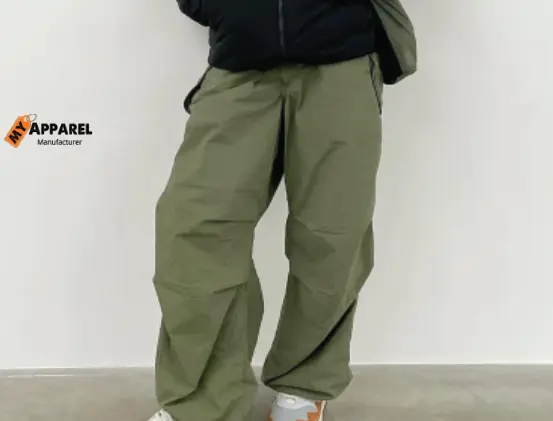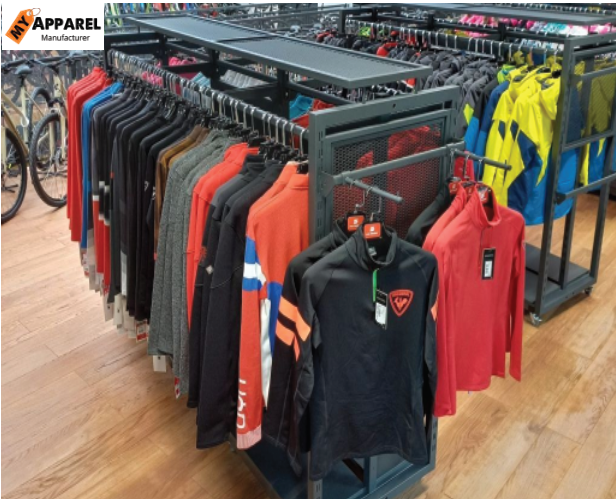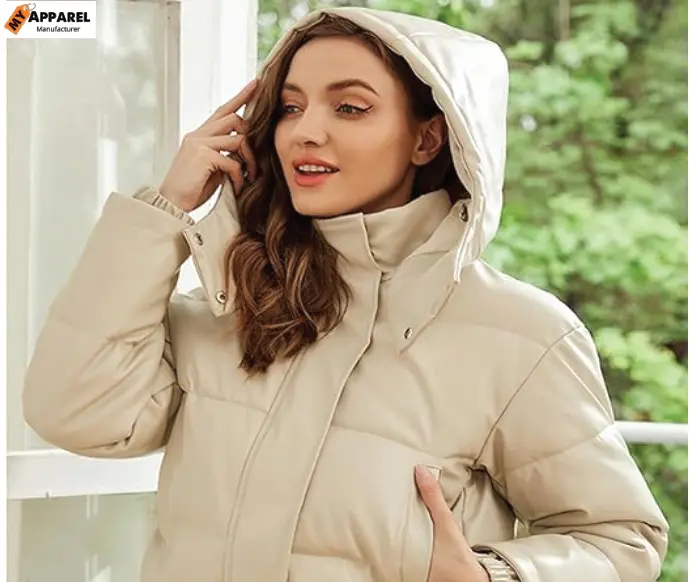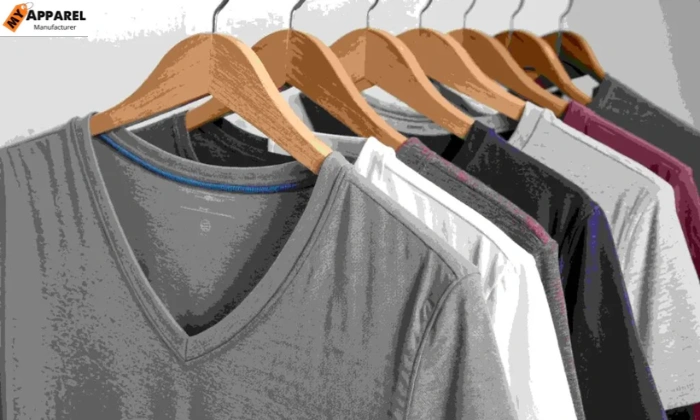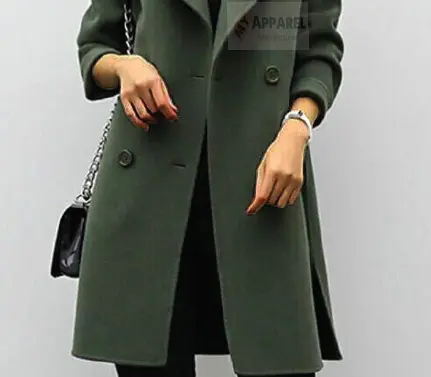Women’s dress manufacturing has come a long way from traditional tailoring to modern, large-scale production that blends creativity, precision, and advanced technology. Whether you’re a small fashion startup or an established clothing brand, understanding the manufacturing process is crucial to delivering dresses that combine comfort, quality, and style. Partnering with the best Clothing Manufactures in China ensures you get high-quality dresses made with expert craftsmanship and innovative techniques, helping your brand stand out in a competitive fashion market.
In this complete guide, My Apparel Manufacturer — the best clothing manufacturer in China — will walk you through each step of the women’s dress manufacturing process, from design to delivery.
Understanding Women’s Dress Manufacturing
The process of women’s dress manufacturing starts with an idea and ends with a ready-to-wear product. It requires creativity, technical skills, and strict quality control to ensure the dress meets customer expectations.
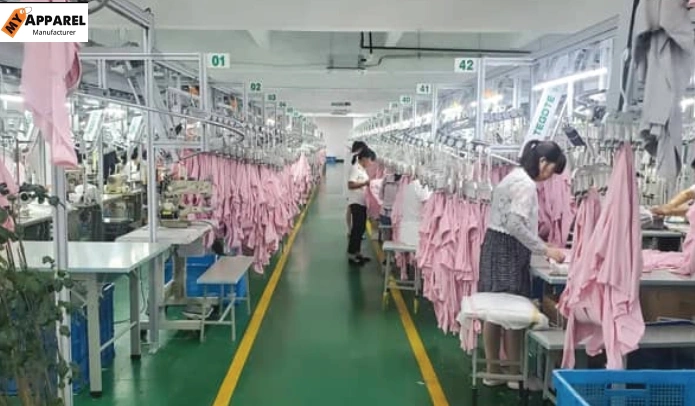
At My Apparel Manufacturer, we ensure every stage is handled with precision, from fabric selection to final inspection, so brands receive garments that match their vision perfectly.
Designing the Perfect Dress
Design is the heart of dress manufacturing. This is where fashion trends, customer demands, and brand identity come together.
Steps on Designing a Dress
1. Concept
Every dress starts with a concept — inspired by seasonal trends, cultural influences, or brand-specific themes. Designers often create mood boards to capture their ideas.
2. Fabric Selection
Fabric determines the look, feel, and comfort of a dress. Choosing the right fabric also affects durability and cost-effectiveness.
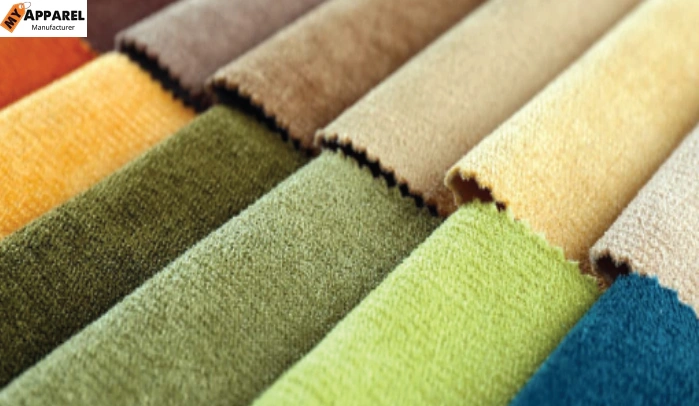
3. Pattern Making
Patterns act as templates for cutting fabric pieces accurately. This step ensures consistent sizing and fit.
4. Pattern Grading (for larger productions)
Grading adjusts the base pattern to different sizes without altering the design proportions.
5. Sample Production
Before mass production, a prototype is created to test fit, style, and construction.
Types of Dresses
- A-line dress – Slim at the top and flares out gently from the waist.
- Maxi dress – Floor-length, flowy dress ideal for casual or formal occasions.
- Sheath dress – Form-fitting and perfect for office wear.
- Wrap dress – Adjustable wrap-around style that suits various body types.
- Peplum dress – Features a short flared fabric at the waist.
- Shift dress – Loose-fitting and versatile for casual wear.
- Skater dress – Flared skirt with a fitted top, popular among younger audiences.
- T-shirt dress – Casual and comfortable everyday wear.
- Jumper dress – Sleeveless dress typically worn over a top.
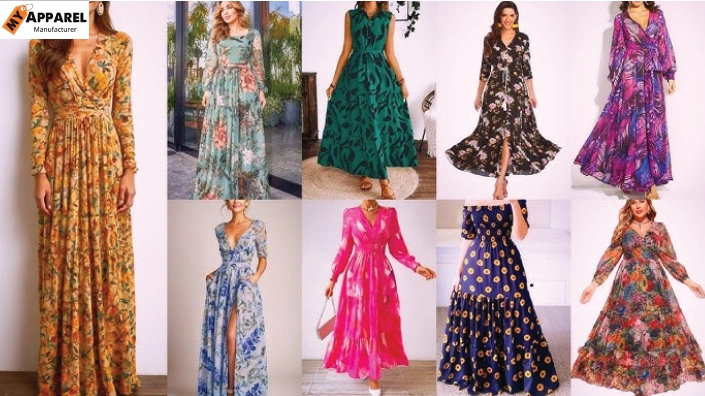
Anatomy of a Garment: Parts of a Women’s Dress manufacturing
Understanding the parts of a dress helps in both design and production: neckline, bodice, sleeves, waistline, skirt, hem, and closures like zippers or buttons.
Choosing Quality Fabrics
High-quality fabrics improve durability, comfort, and appearance. Popular choices include:
- Cotton – Breathable and versatile.
- Tencel – Soft, eco-friendly fabric.
- Linen – Lightweight and ideal for summer.
- Fleece – Cozy and warm.
- Wool – Natural insulation for colder climates.
- Pique – Textured knit fabric.
- Satin – Smooth and glossy for luxury wear.
- Crepe – Wrinkle-resistant with a grainy texture.
- Velvet – Rich, soft pile surface.
- Chiffon – Lightweight, sheer, and elegant.
Pattern Making and Cutting
Accurate pattern making ensures dress manufacturing fit perfectly. Sharp tools are essential to avoid frayed edges and inaccurate cuts.
Pattern Making Tips
- Collect sample dresses for inspiration.
- Draft tech packs with detailed measurements and specifications.
- Practice precise drafting for consistency.
Marking Tips for Cutting Patterns on Fabric
- Choose the right marking tool.
- Test the marker on scrap fabric first.
- Always mark on the inside of the garment.
- Use a straightedge for clean lines.
- Double-check all markings before cutting.
Cutting and Sewing Women’s Dress
Cutting is the process of separating fabric into different parts according to the pattern. Precision in this step ensures pieces fit together perfectly during sewing.
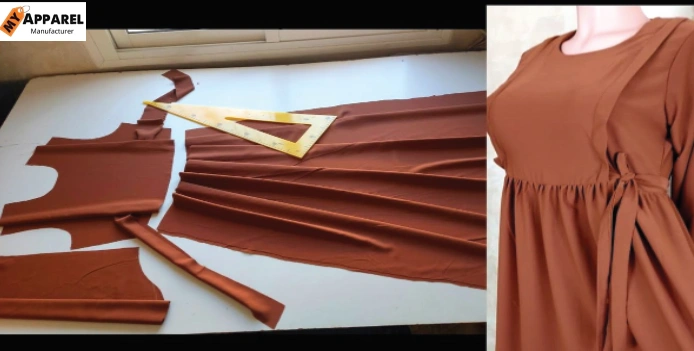
Different Types of Seams for Ladies’ Dresses
- Plain seam – Most common and versatile.
- French seam – Neat finish for delicate fabrics.
- Overlock seam – Prevents fabric from fraying.
- Flat-felled seam – Durable and strong.
Measurement Points for Women’s Dresses
Key points include bust, waist, hips, shoulder width, sleeve length, and total dress length.
Common Printing Techniques Used for Dresses
- Screen printing – Bold, durable designs.
- Digital printing – Detailed and colorful prints.
- Sublimation printing – Best for polyester fabrics.
Different Types of Garment Washing for Women’s Dresses
- Enzyme wash – Softens the fabric.
- Stone wash – Creates a worn-in look.
- Acid wash – Produces unique patterns.
Fabric Dyeing Techniques for Dress manufacturing
- Piece dyeing – Dyeing fabric before sewing.
- Garment dyeing – Dyeing the finished dress for a softer feel.
- Tie-dye – Artistic and colorful patterns.
Conclusion
Women’s dress manufacturing is a combination of creativity, technical skills, and precision. From concept to final product, every step influences the quality and appeal of the dress.
At My Apparel Manufacturer, we help clothing brands bring their designs to life with top-quality fabrics, expert craftsmanship, and strict quality control — making us the best clothing manufacturer in China for women’s dresses.
FAQs
1. How long does it take to manufacture a women’s dress?
Production time depends on complexity and order size. On average, it can take 4–8 weeks from design to delivery.
2. What is the minimum order quantity (MOQ) for women’s dresses?
At My Apparel Manufacturer, our MOQ varies by fabric and style, typically starting from 100 pieces per design.
3. Can I provide my own designs for manufacturing?
Yes, we can work with your custom designs and provide guidance to ensure they are production-ready.
4. Do you offer eco-friendly fabric options?
Yes, we source sustainable fabrics like Tencel, organic cotton, and recycled polyester.
5. How do you ensure dress quality?
We follow strict quality control at each stage — from fabric inspection to final finishing — to ensure high standards.

